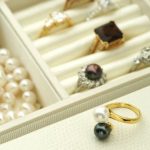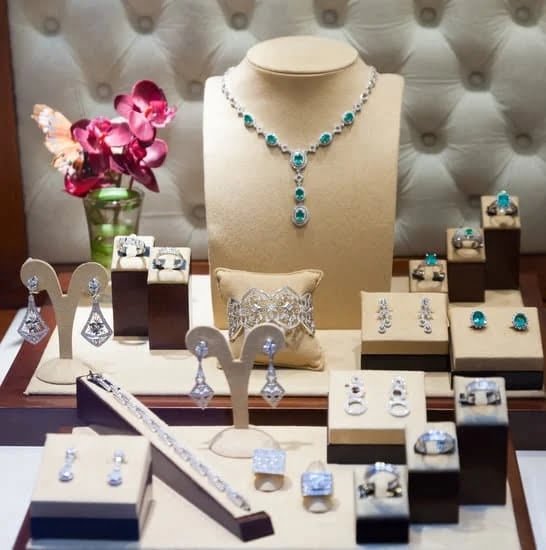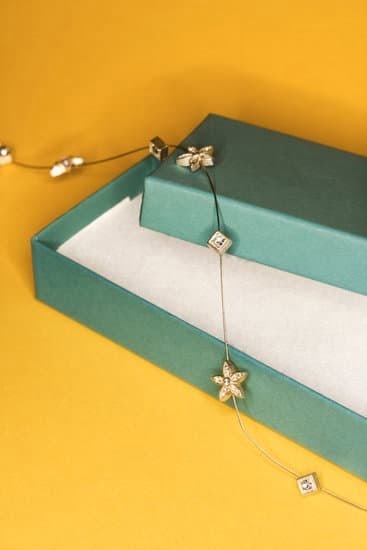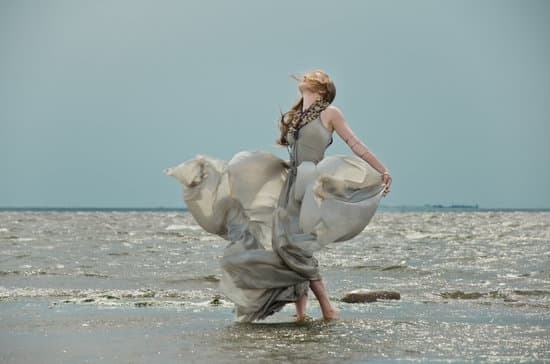Jewels and jewelry have always been associated with being symbols of power, wealth, and beauty in many cultures since the beginning of recorded history. There is no doubt a long and vibrant history of these luxuries that can be traced back to the oldest civilizations on earth. In this article, we will explore some of these cultural origins as well as predominant themes within the overall history of jewels and jewelry.
The Ancient Era: Antiquity And Creative Inspiration Jewels were primarily used in antiquity as a show of religious loyalty and faith among many sects such as the Egyptians and Greeks who adorned their gods with similar ornaments. Rings were a commodity item that were also symbolic but also helped classify classes within society such as gender, rank or marital status particularly in Europe during the Dark Ages.
The Vikings had extravagant pieces made from fine metals that symbolized honor for those involved in warfare while generations prior would use burial sites to showcase wealthy individuals with adornments made from precious materials.
A Symbol Of Beauty And Power: More Recent Historical Reflections As civilization evolved so did the perception of jewels especially when they began being viewed not just from aesthetic purpose but as assets for financial gain or prestige within society.
As an example, many rulers including Spanish monarchs during the 16th century heavily invested in pearls to flaunt their affluence among their people much like Chinese dynasty members several centuries later when Charles V brought pearl earrings set with stones cut by Lazaros Berzanti to signify his power during official ceremonies amongst other court members.
Later, jewelers around Europe would cater to nobility creating intricate designs as well as matching suites crafted from gold and silver combined with various stones accentuating every crevice boasting the highest form of artistry at the time. Today, jewels are seen more casually highlighting individual fashion style along with custom pieces still used as tokens to mark major life events like anniversaries, baptisms or weddings which reminds us all about the impressive past still visible today.
Prehistoric Times
The earliest records of jewelry making dates back to prehistoric times, when people experimented with rocks, shells, and bones to craft necklaces, earrings, and bracelets. This type of adornment was worn not only for fashion good looks but also most likely served as some sort of talisman or form of spiritual protection. Neanderthals have been found wearing evidence of body modifications such as drilled shells and pigmented materials dated to be over 65,000 years old.
Ancient Civilizations: Crafting Techniques Developed From Natural Materials
As civilizations developed over time so did the craftsmanship involved in producing jewelry items, developing from simple designs made out of naturally available resources such as bird feathers and claws into more complex forms made out of gold and silver. Ancient Sumerians were known for their use of colour and symbolism in their jewellery; amber was viewed as magical powers made from the sunlight trapped inside the stone itself while turquoise was seen as having strong healing properties.
Mummified Egyptians are often found wearing ornate gold collars inscribed with hieroglyphics that tell tales of long-ago legends.
Modern Times: From Street Wear To Luxury Gems
In modern times we’ve seen all sorts of jewels go mainstream from the mass productions in many countries around the world to high fashion pieces worth thousands if not millions on one’s investment dollars. Diamonds have become a symbol for commitment within marriage while various gemstones are used to celebrate anniversaries or special occasions both serving as symbols of love between two individuals or families connecting them together forever.
In addition we often witness street wear being adorned with rhinestones or cubic zirconia giving ordinary items a bit more flair. People enjoy dressing up their apparel with pins depicting their favorite band members, logo graphics or simply introducing more colours into their wardrobe landscape without much expense since cubic zirconias and Swarovski crystals cost less than diamonds but still look quite nice when used appropriately.
Ancient Jewelry of the Middle East and Ancient Egypt
The ancient jewelry of the Middle East and Egypt offer a unique insight into some of the earliest societies in human history and their aesthetic influences stretching back thousands of years. The rise of civilization can be linked to the discovery of precious stones, minerals, and metallurgy that allowed, for the first time in human history, for jewelry to be made with great detail and finesse.
During this period many new techniques were developed in technology that has remained relatively unchanged since then.
In Ancient Egypt gold was highly valued and was often crafted into religious amulets or used as ornamentation for ceremonial events, such as weddings or coronations. These pieces usually depicted gods with wings and animals such as cobras, bulls, cats or falcons to convey prestige and power within their society. Stones like turquoise, lapis lazuli or cornelian were also greatly coveted by Egyptians due to their rare beauty and how well they contrasted against gold.
Jewels in Ancient Greece
In ancient Greece however, different values were placed on jewelry than those found in Ancient Egypt; primarily it was intended to display wealth rather than as a symbol of power. Craftsmen would create delicately designed geometric patterns using gold or silver filigree which embellished garments worn by successful women during important ceremonies. Necklaces often featured letters from the Greek alphabet intertwined with colorful glass beads or repoussé volutes pendants which added a sense of movement when hung around the neck.
Ancient Greeks were perhaps more interested in crafting intricate pieces using small gems like garnet quartz crystal wren feathers set into delicate shapes like animals or chariots – these then further adorned clothing worn within their society at significant events like marriages, funerals or festivals. In addition to this craftsmen created beautiful diadems – adorned with pearls – typically worn by married women around their heads signifying status and sovereignty within family units at that time.
Ancient European Jewelry
Jewelry is not just a fashion statement, it carries a long history of being an indicator of wealth and power. This has been true for thousands of years in Europe, with even the ancient Egyptians trading jewelry and gemstones to demonstrate their private fortunes. Although styles have changed drastically throughout the eras, the principle remains the same – carrying special pieces is how people show off their wealth.
The Bronze Age saw major changes in European society, which meant that jewelry became more accessible than ever before. Goldsmiths began producing pieces crafted from copper, bronze and silver; these were typically big and bulky designs that served an ornamental purpose. With this newfound technology came a period of significant artistic progress as artisans began experimenting with new techniques such as chasing, repoussé work and granulation that allowed them to cast intricate details into gold and silver ornaments.
- 1st evidence of Jewelry – Ancient Egyptians
- Bronze Age – Copper & Bronze Pieces used for Ornamental Purposes
- New Techniques Developed – Chasing, Repoussé Work & Granulation
- Growth In Jewelry Trade – Increase In Wealth & Power
- Influence Of Greek/Roman Empires Period
During the period known for its influence from both the Greek and Roman Empires, jewelry became almost synonymous with privilege. Goldsmiths had mastered their craft and further experimentation led to metalworking techniques such as Damascening (the technique of inlaying precious metals) that could bring even greater detail to gold gems.
The techniques used during these times meant that well-crafted jewelry could be produced at a fraction of the cost that it would have taken just centuries before – allowing ordinary citizens more financial scope to purchase intricate ornaments for themselves or others as gifts.
In addition to improvements in design excellence, fashion also took a hold during this time too; jewellery started incorporating coloured stones such as onyxes, emeralds and rubies – offering another means of displaying one’s wealth through colour variation rather than material choice alone. Jewellers also began etching stone faces onto items such as pendants and rings – another way of showing off one’s status within society and unleashing fashion revolutions across empires thereafter.
Medieval Jewelry
Jewelry and jewels were not just fashion accessories for medieval societies; but rather, they played an essential role in social relationships and served as a mark of prestige. Since living standards improved significantly during the high-Middle Ages (1000-1450), jewelry held newfound value in the eyes of those who could afford to wear it.
Women, particularly those within Royal families, would often flaunt grandiose pieces that included diamonds, pearls, rubies, sapphires, emeralds, turquoise or colored glass. This also extended into the class of wealthy merchants who used their wealth to support jewel makers in lavish designs.
The craftsmanship of fashioning such ornamental pieces was intricate. It mainly involved replication of objects such as rings coated with precious metals like gold or silver to add luster and charm to them.
Gemstones set in elaborate arrangements using precise stone cutting techniques was also typical; each technique imparting a distinct look to the piece depending on its shape. To further ornamentation and texture, details such as filigree work were used to fill up the hollow spaces between stones that made way for delicate patterns or engravings made by jewellers.
Themes Behind Medieval Jewelry
- Religious Symbolism: Common symbols used included crucifixes or other christian iconography.
- Chivalric Knightly Symbols: Were usually bulky pieces encrusted with pendants and charms.
- Royal Insignias: Symbols favored by royalty depicted floral or animal motifs.
The Renaissance
The Renaissance is often seen as the rebirth of art and beauty, producing iconic artists and pieces that have withstood the test of time. This period marked a shift away from the morality-based symbolism popular in earlier eras to what can be considered more sensual approaches to jewelry design. Pieces during this era embraced intricate detailing for their own sake, often taking pride in the sheer craftsmanship required to create such works.
Innovations in technology also enabled jewelry designers to begin exploring different cuts and shapes, playing with increasingly bold forms of expression, such as heart-shaped pendants or cufflinks shaped like flowers. Gemstones were also cut into symmetrical shapes, rather than simply polished rocks of random shape; this transformation allowed jewelers to delve further into their designs, resulting in pieces that were both aesthetically pleasing yet carefully engineered.
As the Renaissance continued, jewelers began focusing on conveying emotion rather than religious or moral messages. During this time, a diversity of materials were used for jewelry creations including diamonds set in precious metals such as gold and silver.
Also popular was rose cut diamond stones which are shallowly cut stones with many delicate facets allowing refraction of light through them effectively creating a blush pink hue. Jewelry items began taking on classical motifs such as birds and dolphins epaulette pins made from enamel or diamonds set against rubies or sapphires to create amazing displays.
- Intricate detailing was embraced for its own sake.
- Technology advances enabled new cuts and shapes.
- Emotion became focus instead of religious messages.
- Diamonds set in precious metals like gold and silver.
- Rose cut diamond stones created unique blush pink hue.
- Classical motifs such birds and dolphin utilized well.
The 1700s and 1800s
Jewelry has a long history as a powerful cultural symbol of status, wealth and power. Jewels were often used to represent social rank, connections between family members and even as symbols of love and devotion. During the 18th century, the industrial revolution set into motion a new era in jewelry making, where techniques like goldsmithing and stone cutting became widely accessible. This paved the way for an explosion of new design ideas in jewelry all over the world.
A big part of jewelry-making during this time was cross-cultural influence. People from different parts of the world interacted with each other more than ever before and brought knowledge about their crafts to share with one another.
Examples include how Indian motifs found their way into European designs or how Islamic elements came to be seen in pieces from North America. These connections were strong enough that they left a lasting impression on jewelry design that’s still appreciated today.
During this period, some pieces of jewelry were so valuable they ended up in museums or specially placed collections, which made them easier for future generations to study and appreciate once again. For example, France’s Louvre has examples of several intricately designed pieces from India, while there is also evidence that Chinese styles had reached England by the mid-18th century.
This type of cross-cultural exchange put a spotlight on these arts like never before. It opened doors for further exploration into centuries old traditions in jewels and jewelry making that have persisted until today without losing any of its charm.
Modern Jewelry and Trends
In modern society, jewelry is more diverse than ever before. From elegant pearl necklaces to sparkling diamond rings and unique artistic statement pieces, there’s a never-ending variety of designs to choose from. Artisans around the world are creating intricate pieces that are a blend of old-age traditions with new inspirations. The internet has allowed for a greater exchange of knowledge and creativity in the world of gems, allowing for many innovations and trends to develop quickly.
The modern preference for jewels has sparked an increase in ethical and sustainable practices from miners, designers, and sellers. These include treatments such as gold plating or reusing antique pieces for updated creations. The talk of preserving our planet now more than ever before means that jewelers are working hard to do their part.
Gold sourced from copper mines no longer pollutes the environment like it did years ago due to improved technology and practices. Reusing diamonds or ethically sourced gems also plays an important role in protecting these resources from future depletion.
Another trend that made its way into contemporary design is color mixing – using multiple colors of precious stones on one piece of jewelry or setting them in different shapes and sizes that add texture; this creative combination allows the pieces to be truly unique works of art, replicating natural landscapes like rivers and gardens akin to impressionist paintings.
Uncut gems like crystals are gaining popularity both for their energy healing properties as well as aesthetics, often being paired with spiritual symbols or patterns as talismans imbued with special meaning for those wearing them.
Popular materials range from bright plastic beads and all kinds of metal including sleek titanium cuts, rose gold fillings, silver settings – the list is endless. Of course nothing beats timeless classics; pearls always hold a distinct charm when worn both day or night adding elegance depending on how they’re matched with other accessories such as brooches and earrings for a dramatic presence.

Welcome to my jewelry blog! My name is Sarah and I am the owner of this blog.
I love making jewelry and sharing my creations with others.
So whether you’re someone who loves wearing jewelry yourself or simply enjoys learning about it, be sure to check out my blog for insightful posts on everything related to this exciting topic!





